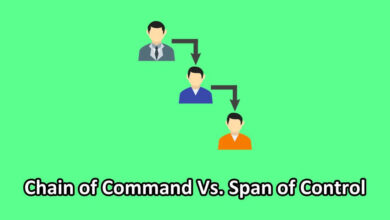In economics, costs are expenses incurred in the production of goods and services. There are two types of costs: explicit costs and implicit costs. Explicit costs are direct expenses that are incurred by a business or individual, while implicit costs are indirect expenses that are not directly paid for by a business or individual. In this article, we will discuss the differences between explicit cost and implicit cost. So let’s first have a look at a table comparing both explicit cost vs implicit cost in a very sequential manner.
Explicit Cost and Implicit Cost (Comparison Chart)
| Explicit Cost | Implicit Cost |
|---|---|
| Explicit costs are direct, out-of-pocket expenses that can be easily quantified and accounted for. | Implicit costs are opportunity costs that are not reflected in actual monetary transactions but represent the value of resources used in the next best alternative. |
| Explicit costs are calculated using actual monetary payments. | Implicit costs are calculated by determining the opportunity cost of the next best alternative foregone. |
| They are tangible and observable in nature. | They are intangible and are not easily observable in nature. |
| Explicit cost is recorded in accounting books. | Implicit costs are not recorded in accounting books. |
| Estimation of explicit cost is objective. | Estimation of implicit cost is subjective. |
| It can be easily tracked in the market. | It cannot be easily tracked in the market. |
| Rent, salaries, utilities, raw materials, etc are examples of explicit costs. | Time, effort, forgone wages or profits, etc are examples of implicit costs. |
You Can Also Read:
What is Explicit Cost?
Explicit costs are direct costs that can be easily quantified and accounted for in financial records. These are the costs that a business or individual pays out-of-pocket. They are expenses that are incurred in order to run a business or perform an activity. Explicit costs are tangible and can be easily quantified in monetary terms. They include wages, salaries, rent, utilities, raw materials, and other expenses that require a direct cash payment.
Examples of Explicit Cost
The two best examples of explicit costs are as follows.
- Rent: If you own a business, you may have to pay rent for your office or store space. Rent is an explicit cost because it is a direct expense that you pay for out-of-pocket.
- Wages: Wages are another example of explicit costs. If you own a business, you will have to pay your employees for their work. Wages are a direct expense that you pay for out-of-pocket.
What is Implicit Cost?
Implicit costs are indirect costs that are not easily quantifiable or accounted for in financial records. These are the costs that are incurred as a result of the resources used in an activity or business but are not directly paid for. Implicit costs can be thought of as opportunity costs – the cost of giving up the next best alternative. These costs represent the value of the best alternative use of a firm’s resources, which is not reflected in its accounting statements.
Examples of Implicit Cost
The two best examples of implicit cost are as follows.
- Foregone Income: If you decide to start your own business, you may have to give up your current job or career. The income you would have earned from that job is an implicit cost of starting your business.
- Time: Time is another example of an implicit cost. If you decide to start a business, you will have to spend time on it, which means you won’t have that time available to do other things. The value of that time is an implicit cost.
Key Differences Between Explicit Cost and Implicit Cost
While comparing both explicit cost vs implicit cost, here we have included some of the key differences between them. They are as follows.
- Measurability: Explicit costs are easy to measure and quantify, while implicit costs are not.
- Recording: Explicit costs are recorded in financial records, while implicit costs are more difficult to account for.
- Payment: Explicit costs require direct payment, while implicit costs do not. Implicit costs are the opportunity cost of choosing one activity over another.
- Directness: Explicit costs are directly related to the production of goods or services, while implicit costs are indirectly related.
- Timeframe: Explicit costs are incurred in the present, while implicit costs are incurred in the past or future. Implicit costs are the cost of giving up an alternative option in the past or the future.

Conclusion
In conclusion, explicit costs are direct expenses that are easily quantifiable and accounted for in financial records, while implicit costs are indirect expenses that are not easily quantifiable or accounted for. Explicit costs require direct payment, while implicit costs do not. Implicit costs are the opportunity cost of choosing one activity over another. Understanding the differences between explicit and implicit costs is important for businesses and individuals, as it can help them make better decisions about resource allocation and financial planning.


